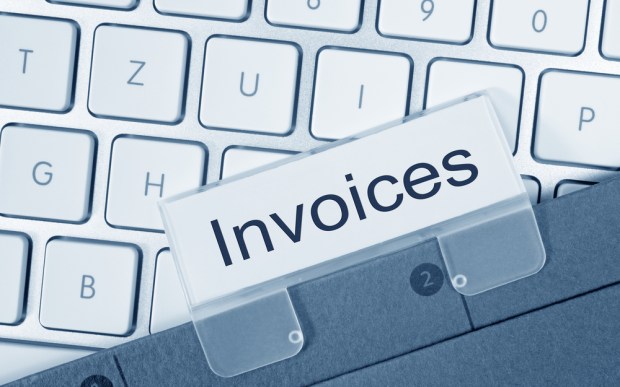The US Government’s eInvoice Mandate: Better Late Than Never

Of all the regulatory changes occurring in the U.S. today, an electronic invoice mandate probably won’t make the primetime news cycle. But it’s a significant milestone nonetheless that federal regulators will be required to pay suppliers via eInvoice by the end of fiscal year (FY) 2018, meaning 19 million invoices government agencies pay every year will have to be electronic.
At present, the federal government said, 19 million invoices are processed every year; about 12 million of them (40 percent) are received in the form of paper. In its U.S. Adoption of Electronic Invoicing: Challenges and Opportunities report released by the Federal Reserve Bank of Minneapolis in 2016, government officials noted the role eInvoicing plays in the broader effort to improve the U.S. payments system as outlined in its Strategies for Improving the U.S. Payment System report.
The Fed’s paper included recommendations for government adoption of an eInvoicing system with its suppliers and contractors and a mandate for such an initiative requiring the eInvoicing shift to occur by the end of this fiscal year (through Sept. 30, 2018).
Analysis of the benefits of eInvoicing included in the report points to cost-savings, boosted efficiency and faster payments to suppliers, among other upsides.
“E-Invoicing is an important part of an efficient financial supply chain, optimizing the end-to-end process of B2B transactions, as it links the internal processes of enterprises to payment systems,” the Fed stated. “As a result, eInvoicing is a vital component of the overall goal of making the end-to-end process (procure-to-pay and order-to-cash) more efficient.”
In a statement to PYMNTS, Steve Smith, U.S. Chief Operating Officer at document process automation company Esker, identified the mandate as a key moment for the country.
“The U.S. is in an interesting time right now,” he said. “The eInvoice mandate coming into effect this year will require companies that do business with the government to send invoices electronically, also known as business-to-government (B2G). This is a significant mandate because the U.S. government is the largest single purchaser of goods and services in the U.S., and it could greatly impact how companies get paid.”
Following Example
The U.S. government reportedly spent $461 billion on federal procurement contracts in FY 2016 alone. In addition to agencies being able to collect richer data on transactions, and to more efficiently manage government spend, the suppliers themselves could see accelerated payment times.
According to the Office of Management and Budget, eInvoicing could also yield up to $260 million in savings for the government every year.
Such could be the case in Australia, which recently announced that government agencies will be required to pay invoices within 20 days, after such action was recommended by the Australian Small Business and Family Enterprise Ombudsman. The rules in Australia will reportedly impact more than 6,800 companies and, officials said, will ensure the government acts as an example to B2B partners currently struggling with a culture of late B2B payment practices.
The U.S. Federal Reserve also highlighted eInvoicing mandates in other parts of the world, including Latin America and Europe, which have seen some of the most robust proliferations of eInvoicing.
What Took So Long?
With so many other jurisdictions having implemented eInvoicing mandates already, why was the U.S. so behind in following suit?
“Considering governments across the world embraced this initiative long ago, it’s surprising that the U.S. has taken this long to move forward with it,” Smith said.
According to the Fed’s report, the agency plays a pivotal role in the rollout of the mandate via its Invoice Processing Platform, developed for the sole purpose of processing B2G invoices. Further, the U.S. faces unique hurdles in boosting eInvoice adoption compared to other markets, the report noted.
“Another large difference between the U.S. and other countries is the size and diversity of the
marketplace,” the Fed wrote in its report. “To implement a standard eInvoicing, the technical framework, semantics and syntax models and legal requirements in the U.S. would require significant coordination between governments and businesses and among businesses on a scale not required in other countries that have mandated eInvoicing.”
Small businesses’ limited resources to adopt eInvoicing solutions, too, plays a role in stunted eInvoice adoption, and, unlike other markets like Latin America, invoices in the U.S. are often shared directly between business partners without the presence of a third party or tax authorities, leading to fragmented and inconsistent adoption rates.
But better late than never, and, according to Smith, it’s likely the U.S.’ requirement for contractors to submit eInvoices will spread into the private sector, just as it’s done in other regions.
“I think this will eventually carry over to the B2B-type businesses in the U.S., as we have seen in Europe and other regions,” the executive noted, adding that Esker has established its own team to address eInvoicing compliance for companies working with the U.S. government and governments in other markets.
The Fed seems to agree.
“The argument is,” it wrote, “if a private business supplier implements eInvoicing to address government requirements, they may well extend this implementation to other businesses they supply.”
With the eInvoicing mandate only months away, the market awaits how electronic invoicing could affect supplier payment terms in the U.S. — and how it could impact the private sector too.
